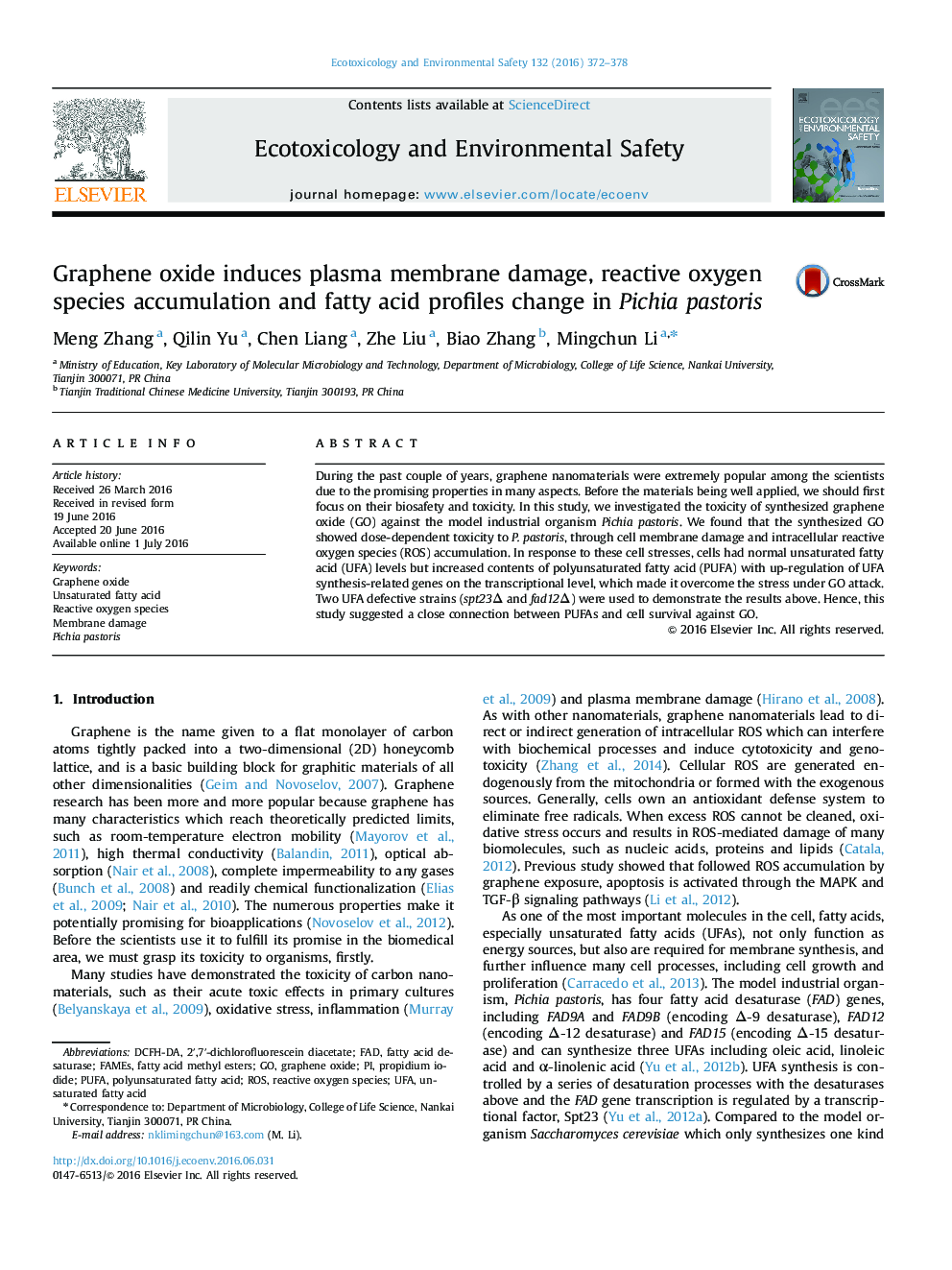| Article ID | Journal | Published Year | Pages | File Type |
|---|---|---|---|---|
| 4419090 | Ecotoxicology and Environmental Safety | 2016 | 7 Pages |
•GO showed doze-dependent toxicity to the model organism Pichia pastoris.•High concentrations of GO induced membrane damage and ROS accumulation.•PUFAs content was increased to overcome the stress under GO attack.
During the past couple of years, graphene nanomaterials were extremely popular among the scientists due to the promising properties in many aspects. Before the materials being well applied, we should first focus on their biosafety and toxicity. In this study, we investigated the toxicity of synthesized graphene oxide (GO) against the model industrial organism Pichia pastoris. We found that the synthesized GO showed dose-dependent toxicity to P. pastoris, through cell membrane damage and intracellular reactive oxygen species (ROS) accumulation. In response to these cell stresses, cells had normal unsaturated fatty acid (UFA) levels but increased contents of polyunsaturated fatty acid (PUFA) with up-regulation of UFA synthesis-related genes on the transcriptional level, which made it overcome the stress under GO attack. Two UFA defective strains (spt23Δ and fad12Δ) were used to demonstrate the results above. Hence, this study suggested a close connection between PUFAs and cell survival against GO.
Graphical abstractFigure optionsDownload full-size imageDownload as PowerPoint slide
